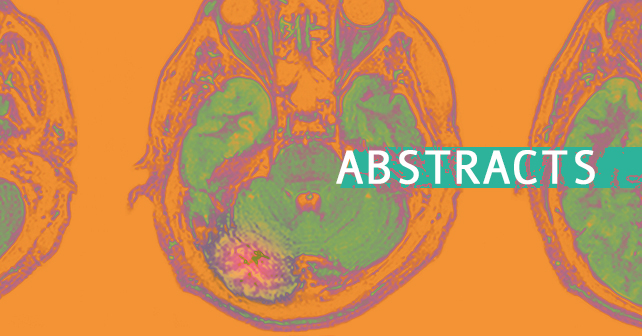What are the optimal imaging techniques to be used in the management of a suspected glioblastoma (GBM), specifically: which imaging sequences are critical for most accurately identifying or diagnosing a GBM and distinguishing this tumor from other tumor types?
The role of imaging for the management of newly diagnosed glioblastoma in adults: a systematic review and evidence-based clinical practice guideline update
Paige Lundy 1, Joseph Domino 2, Timothy Ryken 3, Sarah Fouke 4, David J McCracken 5, D Ryan Ormond 6, Jeffrey J Olson 7Affiliations expand
- PMID: 33215340
- DOI: 10.1007/s11060-020-03597-3
Abstract
Target population: These recommendations apply to adults with a newly diagnosed lesion with a suspected or histopathologically proven glioblastoma (GBM).
Question: What are the optimal imaging techniques to be used in the management of a suspected glioblastoma (GBM), specifically: which imaging sequences are critical for most accurately identifying or diagnosing a GBM and distinguishing this tumor from other tumor types?
Recommendations: Critical Imaging for the Identification and Diagnosis of Glioblastoma Level II: In patients with a suspected GBM, it is recommended that the minimum magnetic resonance imaging (MRI) exam should be an anatomic exam with both T2 weighted, FLAIR and pre- and post-gadolinium contrast enhanced T1 weighted imaging. The addition of diffusion and perfusion weighted MR imaging can assist in the assessment of suspected GBM for the purposes of distinguishing GBM from other tumor types. Computed tomography (CT) can provide additional information regarding calcification or hemorrhage and also can be useful for subjects who are unable to undergo MR imaging. At a minimum, these anatomic sequences can help identify a lesion as well as its location, and potential for surgical intervention. Improvement of diagnostic specificity with the addition of non-anatomic (physiologic imaging) to anatomic imaging Level II: One blinded prospective study and a significant number of case series support the addition of diffusion and perfusion weighted MR imaging in the assessment of suspected GBM, for the purposes of distinguishing GBM from other tumor types (e.g., primary CNS lymphoma or metastases). Level III: It is suggested that magnetic resonance spectroscopy (MRS) and nuclear medicine imaging (PET 18F-FDG and 11C-MET) be used to provide additional support for the diagnosis of GBM.
Keywords: Diagnostic specificity; Diffusion weighted imaging; Glioblastoma; Guidelines; Magnetic resonance imaging; PET imaging; Perfusion weighted imaging; Prognosis.
Similar articles
- The role of imaging in the management of adults with diffuse low grade glioma: A systematic review and evidence-based clinical practice guideline.Fouke SJ, Benzinger T, Gibson D, Ryken TC, Kalkanis SN, Olson JJ.J Neurooncol. 2015 Dec;125(3):457-79. doi: 10.1007/s11060-015-1908-9. Epub 2015 Nov 3.PMID: 26530262 Review.
- The role of radiation therapy in treatment of adults with newly diagnosed glioblastoma multiforme: a systematic review and evidence-based clinical practice guideline update.Ziu M, Kim BYS, Jiang W, Ryken T, Olson JJ.J Neurooncol. 2020 Nov;150(2):215-267. doi: 10.1007/s11060-020-03612-7. Epub 2020 Nov 19.PMID: 33215344 Review.
- Congress of neurological surgeons systematic review and evidence-based guidelines update on the role of emerging developments in the management of newly diagnosed glioblastoma.Farrell C, Shi W, Bodman A, Olson JJ.J Neurooncol. 2020 Nov;150(2):269-359. doi: 10.1007/s11060-020-03607-4. Epub 2020 Nov 19.PMID: 33215345 Review.
- Robust texture features for response monitoring of glioblastoma multiforme on T1-weighted and T2-FLAIR MR images: a preliminary investigation in terms of identification and segmentation.Assefa D, Keller H, Ménard C, Laperriere N, Ferrari RJ, Yeung I.Med Phys. 2010 Apr;37(4):1722-36. doi: 10.1118/1.3357289.PMID: 20443493
- [18F]Fludarabine-PET as a promising tool for differentiating CNS lymphoma and glioblastoma: Comparative analysis with [18F]FDG in human xenograft models.Hovhannisyan N, Fillesoye F, Guillouet S, Ibazizene M, Toutain J, Gourand F, Valable S, Plancoulaine B, Barré L.Theranostics. 2018 Aug 10;8(16):4563-4573. doi: 10.7150/thno.26754. eCollection 2018.PMID: 30214639 Free PMC article.

